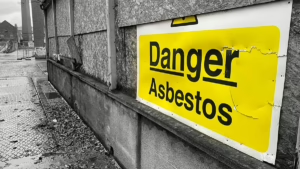Burnout is a less discussed issue in the workplace. It can have long-lasting and serious effects on individuals and organizations.
Nathan Shearman explains burnout as not only feeling overworked, but also reaching a level of physical, mental, and emotional depletion.
Employers who are aware of the warning signs will be in a better position to help their employees and prevent any long-term harm. This is something that needs to be discussed openly during Mental Health Awareness Week.
What is the most common sign of employee burnout and how can you identify it?
Exhaustion
Burnout is often characterized by exhaustion, which can be a very noticeable symptom. However, it’s more than just feeling tired.
Shearman says that burnout is not just tiredness or exhaustion.
Burnout can be characterized by the fact that you feel tired no matter how much you sleep. Burnout is not relieved by rest.
Problems with concentration
Shearman says that burnout can occur when your day-today, simple tasks like answering an email or having a conversation require your full attention and energy.
This is true, especially if you are struggling to complete tasks that you normally find simple or easy.
This difficulty in concentrating at work can lead to mistakes. Staff may feel frustrated, guilty, or that they are to blame for their inability to concentrate more.
Cynicism, negativity and negative thinking
Burnout can also lead to a dramatic change in the way that people feel and think, leading to an increase in negativity and withdrawal.
Shearman says that when we feel burned out, it’s hard to focus on the good things in our lives.
It’s the same as when you’re sick and you’re feeling blue and sunny outside. You may be able to recognise the beautiful weather, but it does not feel lovely due to how you are feeling inside.
It can be difficult to find joy in things that normally bring us happiness. Shearman says: “We don’t appreciate the good things in our lives as much as we would like to. This can lead us to negative thoughts such as, ‘What is the point?’ or Everything is rubbish.’
We can be cynical or highly doubtful of any help offered, believing that it will not work or that it is not coming from a sincere place.
Physical Symptoms
Burnout affects not only mental and emotional well-being, but also the physical body.
Shearman says that physical symptoms of burnout can be common and are often overlooked.
Burnout can cause headaches, stomach problems, and muscle pains. These symptoms can be ignored or reduced, or treated with short-term remedies like paracetamol.
Burnout also lowers the immune system, making it easier to catch other viruses and illness.
Withdrawal & Isolation
Burnout can make it difficult to interact with others due to exhaustion or physical symptoms. It is not uncommon for people to withdraw from their colleagues, even if they aren’t aware of it.
Shearman says that the isolation can start out subtle but grow to a point where we are almost totally isolated.
When we are feeling burned out, we also feel disconnected from others because we focus on our own experience. When we are disconnected from others, we can often overlook the importance of connecting.
How can business minimise their risks?
Shearman says that fostering an open culture is crucial to preventing burnout, before it becomes unbearable. It’s important that employees feel comfortable speaking up about their struggles without being judged or viewed as weak.
In many organizations, it is difficult to speak up about burnout because it is often perceived as a sign of weakness. “People may think that the rest of their team is doing fine, but they are the only ones who fall short,” says he.
“The truth of the matter is, we don’t know when someone else is struggling. So it’s not always us. Burnout is not a sign of weakness.
If someone speaks up early, they are more likely to receive the right support and get better faster.
He also stresses the importance of having mental health first aiders in place, who can spot signs early and guide employees to appropriate help.
Shearman says that “having professional services available for employees who need assistance, and reminding them regularly of their availability, is essential.”
Employee Assistance Programmes (EAPs), while a good resource for those in need, can also be used as a proactive tool when someone doesn’t feel well. Counselling and therapy are seen as services that you only use in times of crisis, but they can be used as proactive measures.
Shearman says: “If mental health is treated as a preventative measure, and not just a reactive one, then we can give people the tools they need to remain healthy and resilient over the long term.
“It is not only good for the people but also for the business.”
The original version of this article, Mental Health Awareness Week – Nottingham psychotherapist reveals real signs of employee Burnout, appeared first on HR news.



